I was just reading an article in Classic American Iron from a year ago posing a question about one of Joe Petrali’s flat track race bikes. I’ve been on a bit of a flat track kick lately and was just posting a few cool photos over in the forums, so I thought I’d answer it for them (since I know the answer).
They ask about the double down tubes on Joe’s bike (seen in the photo to the left) and ask why the bike same bike, which is on display at the Indiana Motor Speedway Museum, has only a single down tube (seen in the photos below).
The answer may be obvious to some, but it’s an interesting bit of history so allow me to explain.
The short answer is a simple one, the bike at the Museum in Indiana is a replica. You can tell just by looking at the photos, but I have proof at the end of the post.
Joe Petrali started his race career in the mid 20’s on classic Harley 350cc peashooters (race bikes with no clutches, brakes, or transmissions). These bikes were almost exclusively single down tube bikes throughout all their years of manufacture. If you look at any handful of Joe Petrali race photos (or just race photos from the era in general) you will see the vast majority of his racing was done on the single down tube bikes. In the photo below he is on his 1925 model after being signed by Harley.
Joe Petrali was working at the Crocker factory on assembly lines during the days and racing for Indian motorcycle on the weekends during the early 1920’s. One fateful day in 1925 (July 4th) he was scheduled to race in the AMA 100 mile championship. Unfortunately his bike never showed up at the track in PA, it had been mistakenly shipped elsewhere. As luck would have it a Harley factory racer, Ralph Hepburn, had injured himself in the practice laps. He told Joe to ride his Harley under the condition that they split any winnings. Joe agreed. Not only did Joe win the race on that day, but he won by an entire lap and set a new track record. Harley soon came calling.
In 1932 Harley produced it’s DAH model v-twin hill climbing motorcycle which was their first race bike of the era to feature the twin downtube frame. They only produced a total of 25 of these bikes, all for their race team. Joe Petrali raced them in the 1932-1936 hill climb seasons – though clearly the original photo in question is not one of these twin cylinder bikes.
However, in 1934 Harley produced the CAC model flat track racers featuring a 500cc single designed and built by Joe Petrali himself for the dirt circuit. Most of the mechanics were copied from the British JAP bikes which were dominating many of the races.
Only 12 of the bikes were made, and only 3 or 4 of those twelve remain today. These bikes have a twin downtube which can be seen in the photo below.
The original posted photo is from Joe Petrali’s 1935 season where he was riding a modified version of the 1934 bike. Here are a couple more press shots from that season.
So there you have it. The bike in the Museum is a replica of Joe’s 1935 year bike, but built on top of an early 1930’s frame because they are much more readily available.
If you need some proof, here you go:

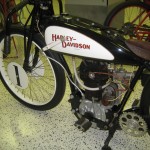
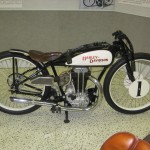
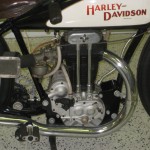

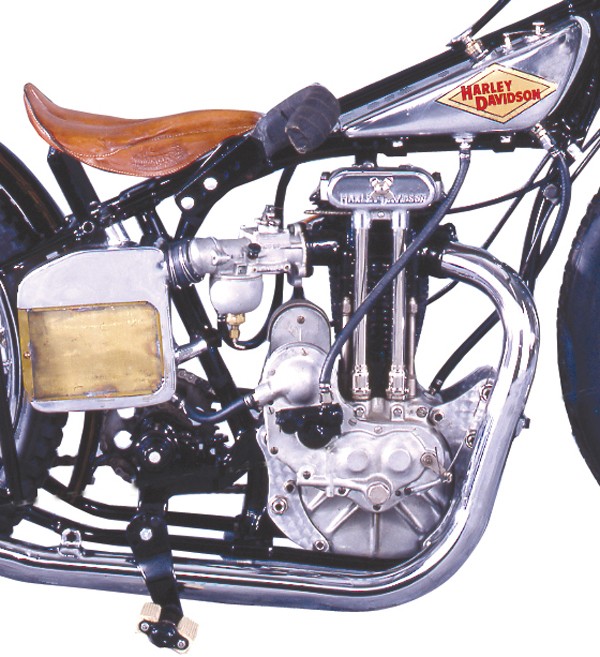
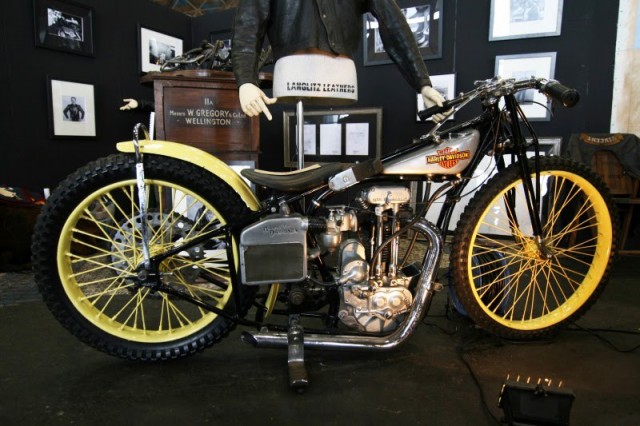
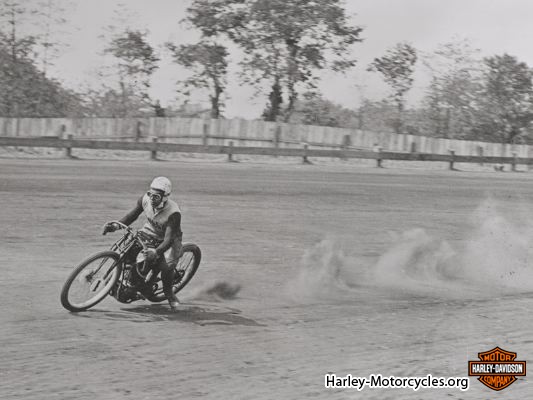
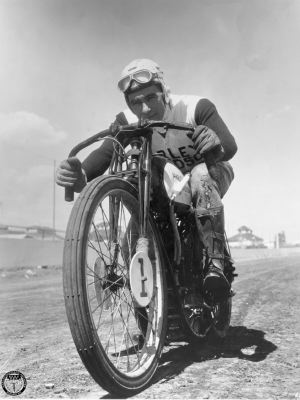
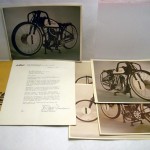
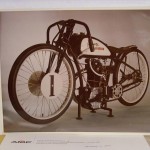
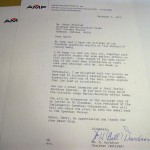
What a terrific site. I love all things motorcycle and really enjoy your broad appreciation. I also envy your ability to pursue them! I’m an old guy and chose to do some vintage MX, and am having a great time doing what I couldn’t do as a youngster. Your site is a vicarious entrance to the other possibilities. Thanks and keep up the good work!
Steve
[Reply]
Evan Fell Reply:
July 16th, 2011 at 2:02 am
Thanks for the kind works Steve! Glad you are enjoying the blog. I don’t write as often as I might, but try to make it worthwhile when I do. You can catch a little more of my motorcycle musings at my other blog http://travel.evanfell.com/
Cheers!
[Reply]
Very interesting post! I enjoy reading about the history of bikes, how they are the same yet different from what we have now. Thanks for sharing.
[Reply]
Thanks for the post and the short history lesson. It was great seeing the pictures of the old bikes and reading about how it came to be made. We work with motorcycles so we love reading about the history of motorcycles to learn how the modern day bike came to be.
[Reply]
What a sweet Harley. I wish I could get one that looks like this without having to spend an arm and a leg.
[Reply]
The Bohn Bodyguard System seems to make a lot of sense for everyday riding, as I can
http://www.bohn-armor-pants.com
[Reply]
Here are my worst in descending order8. Brzea7.Amaving Spider Man6. Hunger Games5. What to Expect When You’re Expecting4. The Vow3. Joyful Noise2. The Avengers1. The Perks of Being a Wallflower
[Reply]
Thank you for another great article. The place else may anyone get that kind of info in such an ideal means of writing? I’ve a presentation next week, and I am at the look for such info.
[Reply]